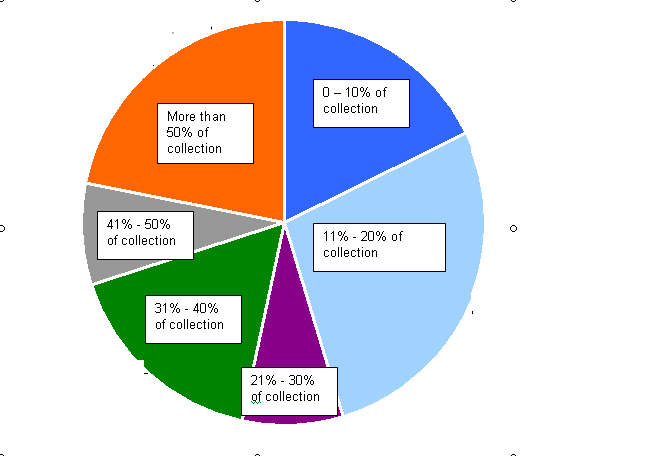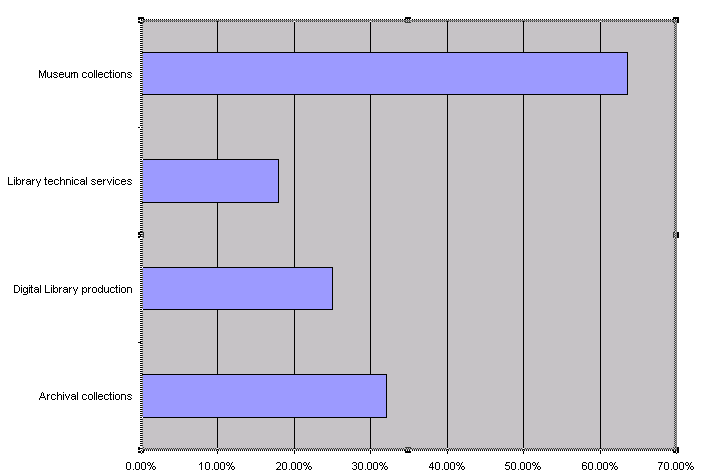OK, so I was overly optimistic when I predicted that the report on the RLG Descriptive Metadata Practices Survey results would be out in October. I had anticipated that a lot of the data would need to be normalized, but underestimated the challenges in interpreting the results – what they mean, what questions they raise, and what we think we now understand of current descriptive metadata practices and dependencies.
Since I posted my preliminary analysis, we received an additional response, making the total 89 from the 18 RLG Programs partners selected because they had “multiple metadata creation centers” on campus that included libraries, archives, and museums and had some interaction among them. We still have a diverse set of perspectives represented. 40% of the respondents characterized their immediate work environments as digital library production, 37% as archival collections processing, 37% as library technical services, 19% as museum collections, and 16% as institutional repositories.
While we continue to analyze the results, here are a couple of charts to continue to whet your appetite.
What percentage of your collection do you estimate has not been adequately described – and is unlikely to be described without additional resources, funding, or both?

This is sort of a “is the glass half full or half empty?” type question. You could say that more than half of the respondents estimate 30% or less of their collections are not adequately described, and not likely to be, meaning that 70% or more of their collections are adequately described. Or you could say just under half of the respondents estimate that 30% or more of their collections are not adequately described.
It’s more revealing to filter the responses for the “more than 50%” of collections estimated to be inadequately described (22% of all responses in the aggregate) by the immediate work environment the respondents characterized themselves as – archival collections, digital library production, library technical services, or museum collections:
More than 50% of collection inadequately described, and unlikely to be.

So it would appear that efficient metadata tools are most needed by museum collections, and archival collections are almost twice as likely to have less than half of their collection adequately described when compared to libraries. And that libraries as a group have more adequately described their collections than the other groups. Maybe.
Stay tuned for more…
Karen Smith-Yoshimura, senior program officer, topics related to creating and managing metadata with a focus on large research libraries and multilingual requirements. Karen retired from OCLC November 2020.

